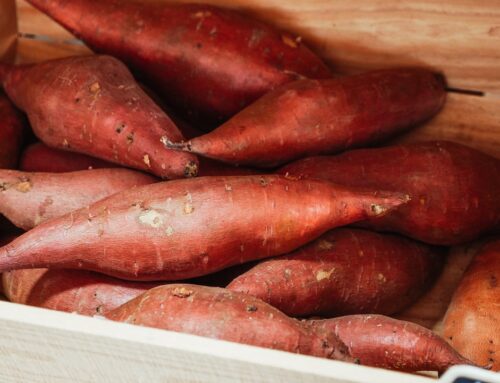
Sweet potato farming – the basics
The sweet potato is an underrated popular vegetable in South Africa. Since it is a tropical crop, it cannot be grown everywhere. Interestingly, it is also popular in India, China and Japan. In southern America, its popularity supersedes that of the potato. There they refer to the sweet potato as the “potato” and the potato the “white potato”. I hope that makes sense to you. The “Irish potato” is also referred to as the white potato. It is regarded as a bio-efficient crop because it yields a high amount of energy per unit area per unit time.
Growers often compare sweet potatoes with potato production. Some farmers think they are the same type of vegetable. Maybe it’s because we seldom combine potatoes with sweet potatoes in a dish. It is either on or the other. They are entirely different and should be marketed to consumers as such. The great advantage of the sweet potato plant is that its leaves are edible and preparation is the same way as spinach.
The global value of sweet potato production is $31b ($21b in China) compared to the global value of potatoes in 2012, which was $50b ($12.6b in China). China produces more than 60% of the worlds sweet potatoes1.
Top sweet potato producing (MT = metric tonnes) countries are23:
- China 71MT
- Malawi 5.4MT
- Tanzania 4.2MT
- Nigeria 4MT
- Indonesia 2.4MT
- Ethiopia 2.7MT
- Angola 1.8MT
- Uganda 1.8MT
- USA 1.3MT
- Tanzania 3.3MT
The sweet potato’s scientific name is Ipomoea batatas Poir interestingly, it belongs to the Morning Glory family (Convolvulaceae), which is a weed in Africa. It is a tuberous rooted perennial. It is classified as a storage root, rather than a tuber. The flowers of sweet potato resemble those of Morning Glory. So make sure before you start weeding Morning Glory that it is not sweet potato!
The primary production areas in South Africa are:
- Limpopo: Hoedspruit, Marble Hall, Burgersfort, Levubu. Low-risk areas.
- Mpumalanga: Nelspruit low-risk i.t.o frost.
- KwaZulu-Natal – medium risk but there can be frost further away from the sea
- Western Cape – low risk but temperatures can get low.
Although sweet potato is a small crop, it is considered an important food source in Global Food Security research4. It is popular in countries with tropical and sub-tropical climates. Other countries have not adopted the crop because it is difficult and expensive to export. Sweet potato is the third most important crop in seven sub-Saharan African countries, even outranking cassava and maize. Industrial products from sweet potatoes are starch, liquid glucose, citric acid, monosodium glutamate and ethanol.
What makes sweet potato such an excellent crop for consumers.
It is a very healthy vegetable, delicious and used in a variety of dishes. These aspects create a strong demand making it viable for commercial production.
The crude protein content is not that high and ranges between 0.7-0.9%, but, it is of better quality than cassava, plantains. Potato, yams and cereals still provide a better protein quality which contains more than 1% protein.
There are significant differences in dietary fibre content between varieties. So an average is not a good value to present. The dietary content varies between 0.11 – 1% and some types even double that.
β carotene content is essential, but again sweet potato content ranges from 0-13.1mg/100g, depending on the variety. Yellow varieties contain more β carotene while white varieties have more lycopene. Lycopene is intermediate in the biosynthesis of β carotene. On average sweet potatoes do provide the recommended intake of β carotene. It is also rich in manganese, vitamin B5 and vitamin B6.
It is a bio-efficient crop, requiring fewer inputs and less labour than other staple crops. Bio-efficiency is essential in developing countries where recourses are limited in food production. So it is an ideal crop for small scale farmers all around the world.
Climate requirements
Sweet potato is a sub-tropical crop. This limits where it can be grown commercially as yields are low if the day and night temperatures are cool during most of the growing season. Ideal temperature range is between 21°C to 26°C. Higher temperatures increased above-ground growth but not root yields5. Frost is the Achilles heel of sweet potato production and a minimum of 4 months frost free is essential for reasonable yields. The leaves show frost damage very quickly after which they shrivel up and die. So growing sweet potatoes in the Freestate is very risky. It does not mean that it’s impossible, but you run the risk of losing a significant part of your yield. Temperatures below 10°C reduce yields significantly.
Temperature is the most limiting factor. It is possible to grow sweet potatoes without an irrigation system, but don’t expect the same yields. See the chapter on irrigation further down. Mulch can reduce water loss in non-irrigated land. Still, it will not have a significant yield increase 6.
References
- https://en.wikipedia.org/wiki/List_of_most_valuable_crops_and_livestock_products
- Wee, Rolando Y. 2017, Top Sweet Potato Growing Countries, WorldAtlas, viewed 9 February 2020, <https://www.worldatlas.com/articles/top-sweet-potato-growing-countries.html/>.
- http://www.factfish.com/statistic-country/zambia/sweet+potatoes,+production+quantity
- V. Iese et al., Facing food security risks: The rise and rise of the sweet potato in the Pacific Islands. Global Food Security. 18 (2018), pp. 48–56.
- Reddy, K. & Gajanayake, Bandara & Shankle, Mark & Arancibia, Ramón. (2013). Temperature Effects on Sweetpotato Growth and Development, Poster Board #227.
- Reddy, K. & Gajanayake, Bandara & Shankle, Mark & Arancibia, Ramón. (2013). Temperature Effects on Sweetpotato Growth and Development, Poster Board #227.




